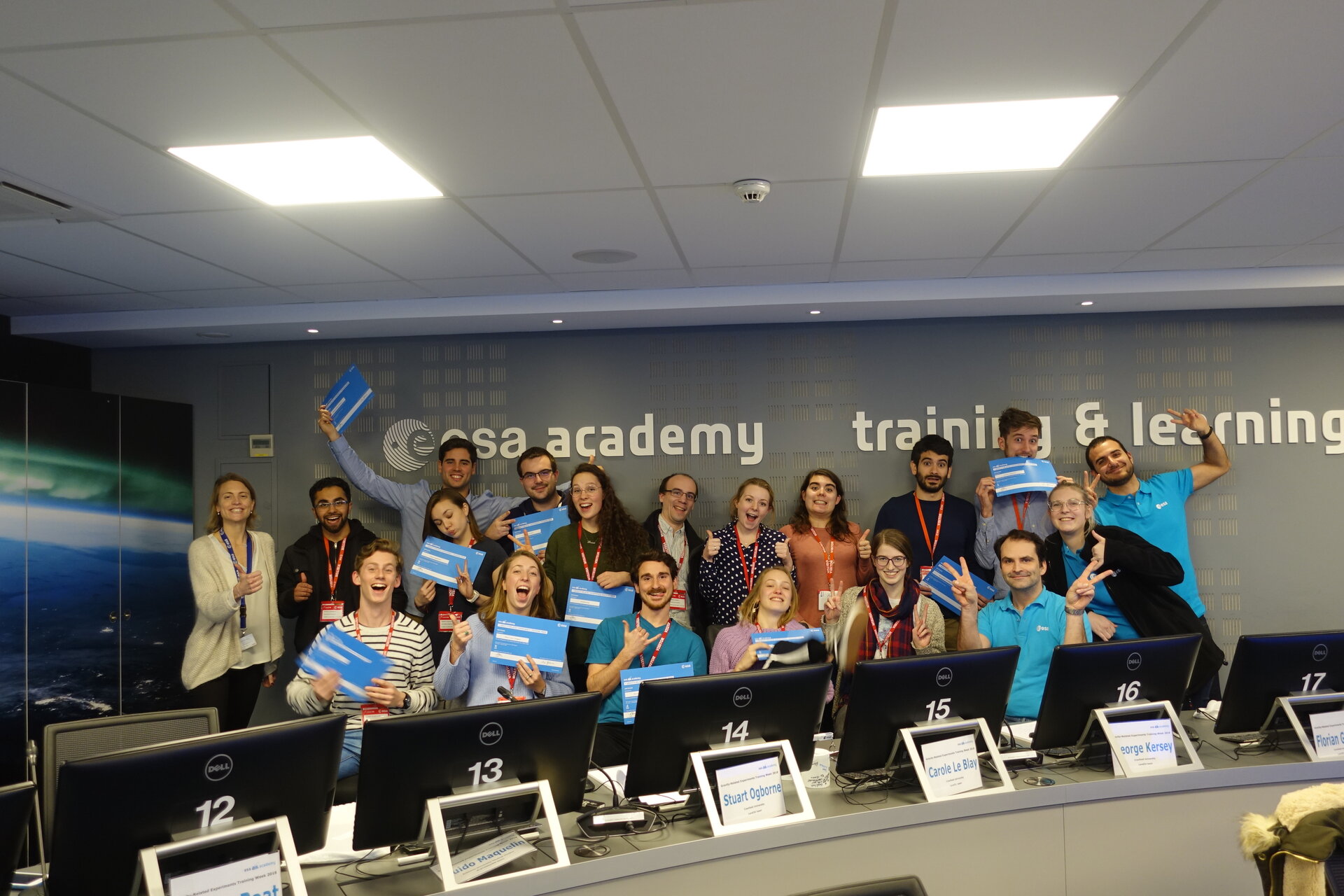Gravity Related Experiments Training Workshop 2018 in ESEC concludes
From the 30th January to the 2nd of February 2018, 16 University students completed a week of learning how to manage a project and build experiments for the Spin Your Thesis! Drop Your Thesis! and Fly Your Thesis! programmes at ESEC, in Redu, Belgium.
Since the establishment of ESA Academy’s Training and Learning Centre two years ago, ESA Education Office strives to impart the knowledge of professionals to university students who will, in a matter of months, be young professionals. Teams selected at the end of 2017 for the Spin Your Thesis! Drop Your Thesis! and Fly Your Thesis! were no exception to this pedagogical exercise and last week proved to be enlightening for most.
"Inspiring would be an understatement to describe the training week experience at ESEC. Along with the other fortunate students, I was privileged to hear and learn from many experts who work with or in affiliation with the European Space Agency. The week was very informative and applied, and was structured in a manner that not only engaged students, but continued to motivate us. ESA Education organized a stellar week of training for all teams embarking on gravity-related experiments, laying the foundation for us to succeed in our upcoming projects and beyond. " said a student of the G-reach team, who will investigate motor adaptation to microgravity environment.

For all students, their participation in these programmes will undoubtedly be the largest project undertaken yet, with many stakeholders and external partners adding to the pressure of getting a functional experiment at the end of the year. As the magnitude and complexity of their projects dawned on the teams, ESA Education alongside engineers working at the Bremen Drop Tower, Novespace and ESA's Large Diameter Centrifuge discussed in detail many aspects of their experiments set up and procedure in order to have them approach their experiment project in the most sensible and efficient way.
Setting requirements similar to ECSS standards, designing, building, testing, assembling, verifying were all concepts that most students will encounter for the first time but are at the heart of the programmes. As such, a system engineering approach is key to the success of the students’ projects. Teams unfamiliar with Computer Aided Design (CAD) and experiment automation also took part in interactive workshops. Team, project and risk management was also discussed at length as these aspects are often overlooked and can be critical especially in times of pressure and stress.
Former students who had previously participated in the programmes were also given the opportunity to share their point of view and transmit their key messages to the new students - ‘heed the advice ESA Education and engineers provide you with this week’ was their message. Indeed, most mistakes can be avoided, if teams are given the right management tools and are prepared to mitigate arising problems.

The week was bestrewn with lectures from ESA staff giving an overview of the research that European scientists are performing on gravity altering platforms and ESA Astronaut Reinhold Ewald spoke to the students about Human Space Flight and Exploration and encouraged the students to do their very best in order to achieve their goals.
Thus, another training week concludes at ESA Academy’s Training and Learning Centre and another group of students return home from the Ardennes ready to face a very real world with industrial and space agency partners. ESA will follow them throughout the entire process of development, testing and experimenting until data analysis. ESA Education Office is convinced that they will now succeed in their endeavours and this experience will give them the confidence to move ahead in the world of microgravity and hypergravity.




